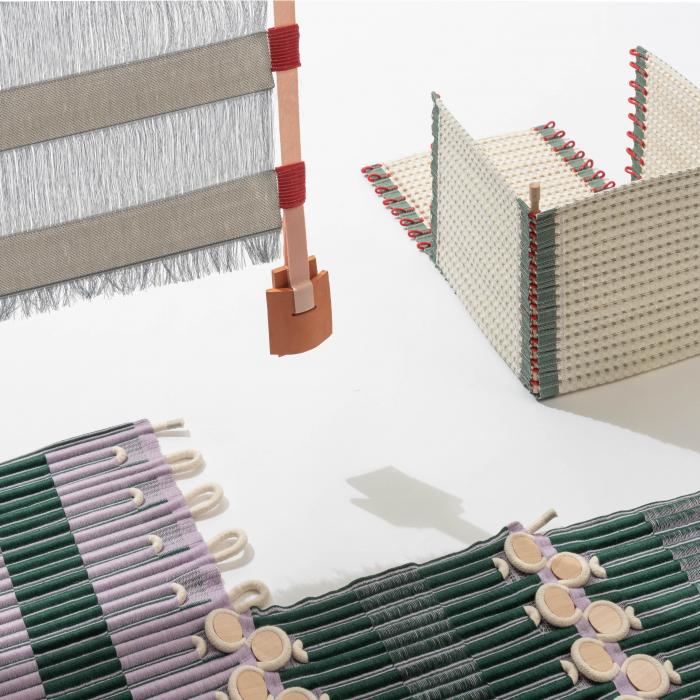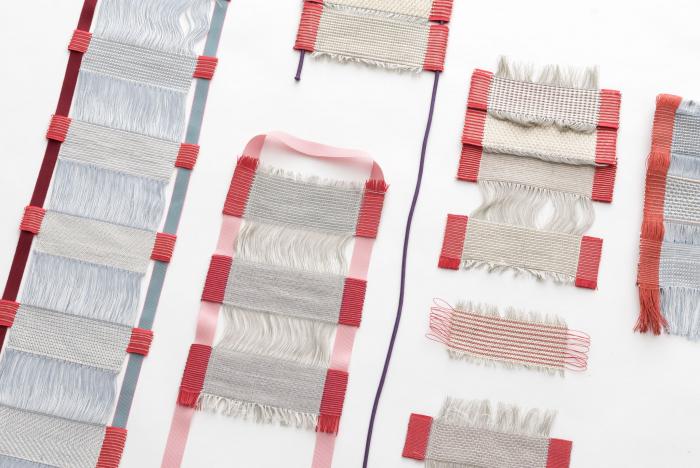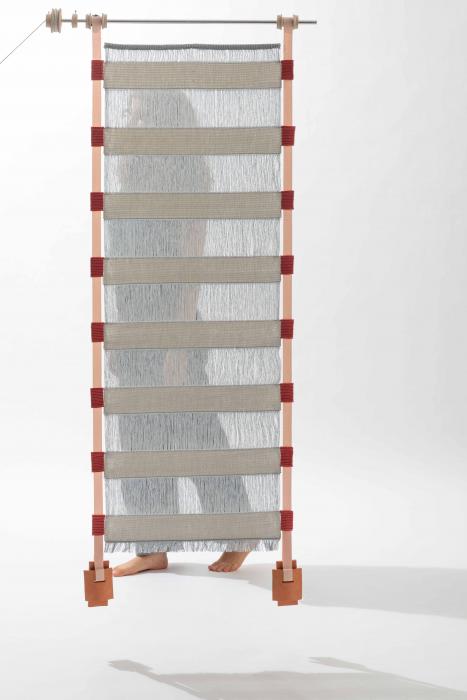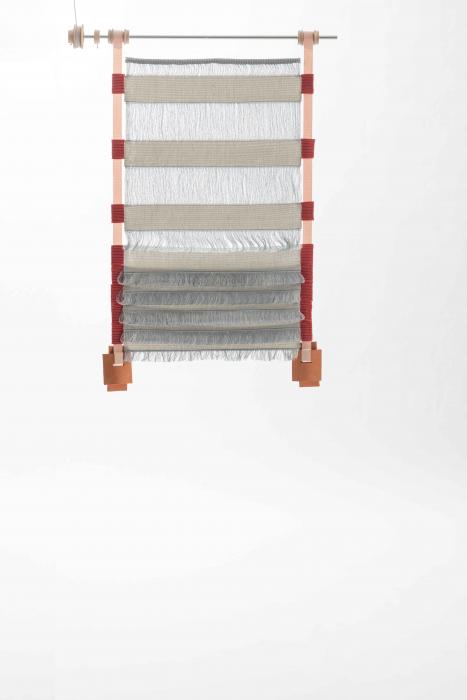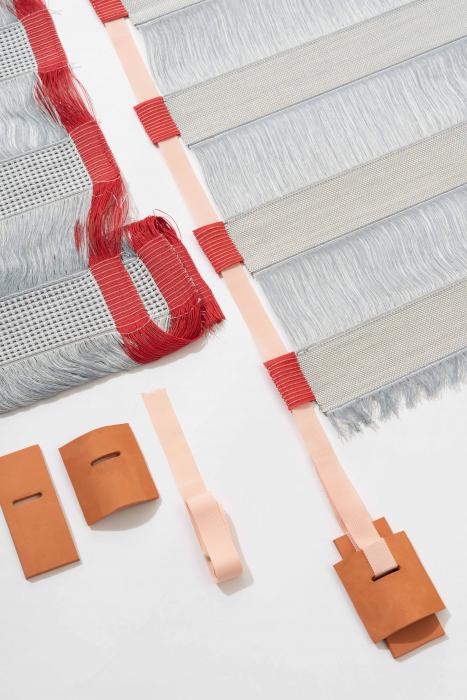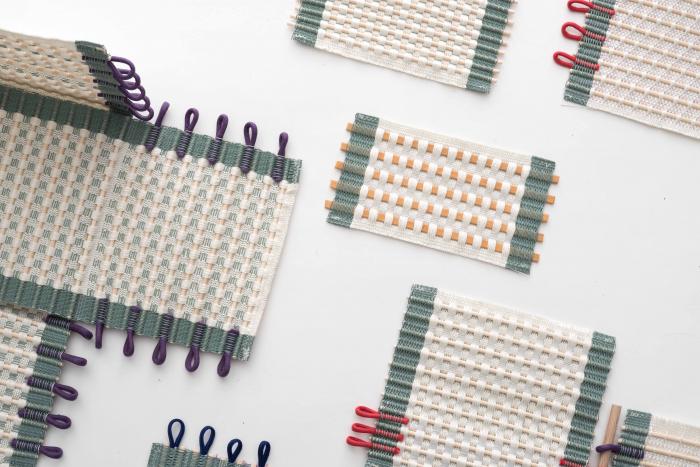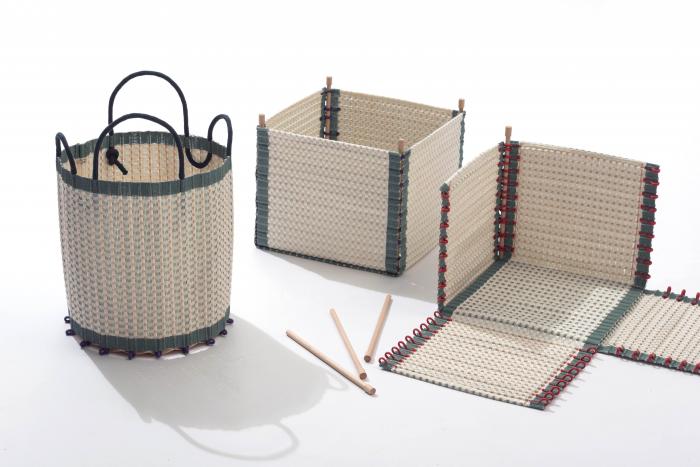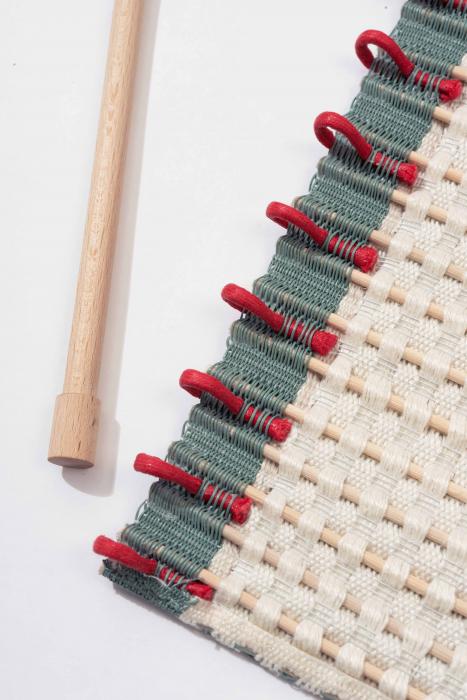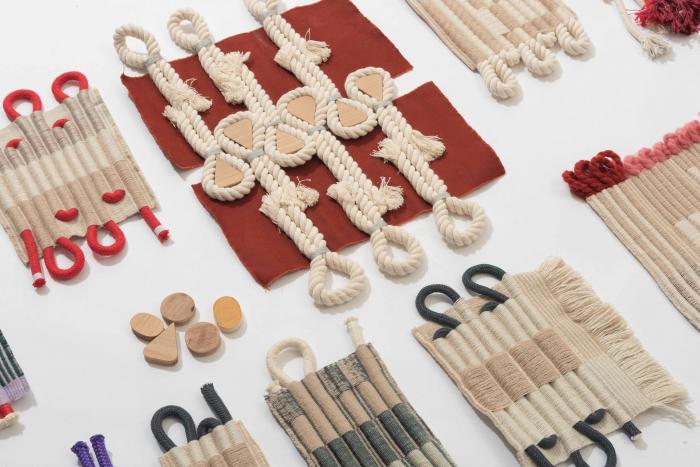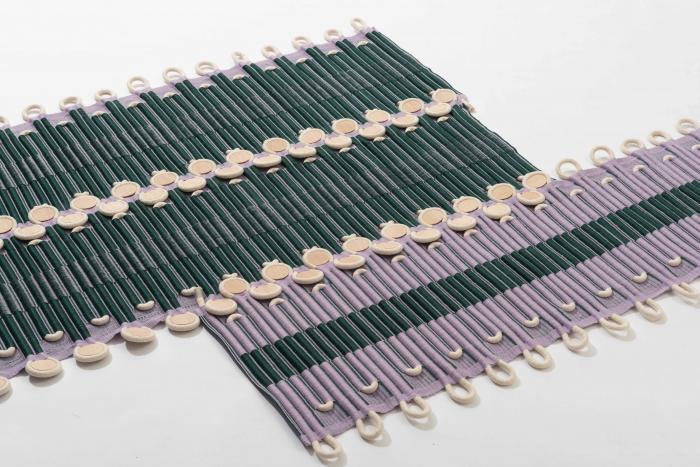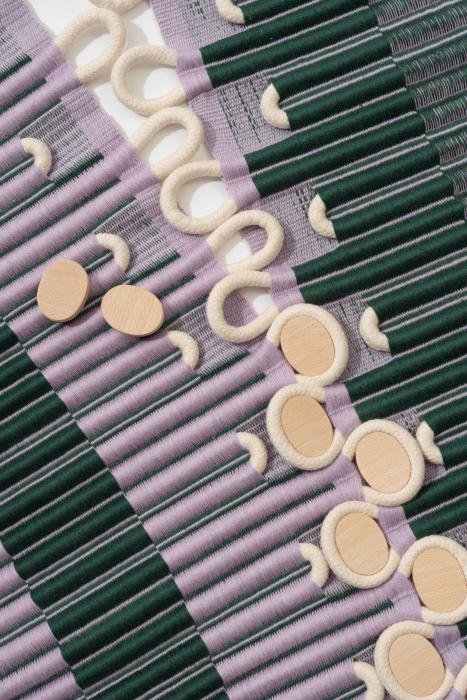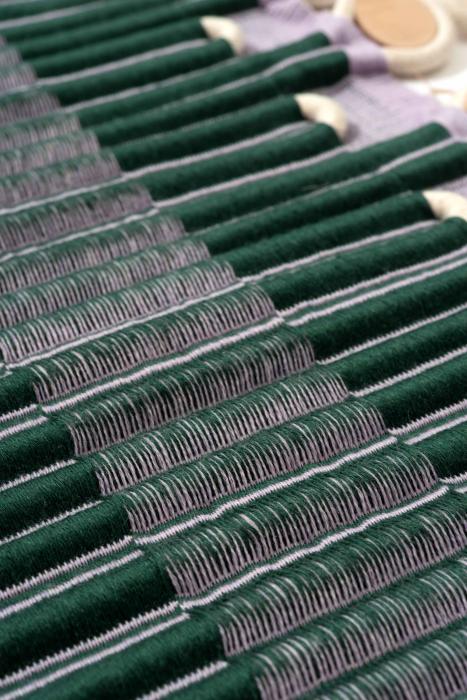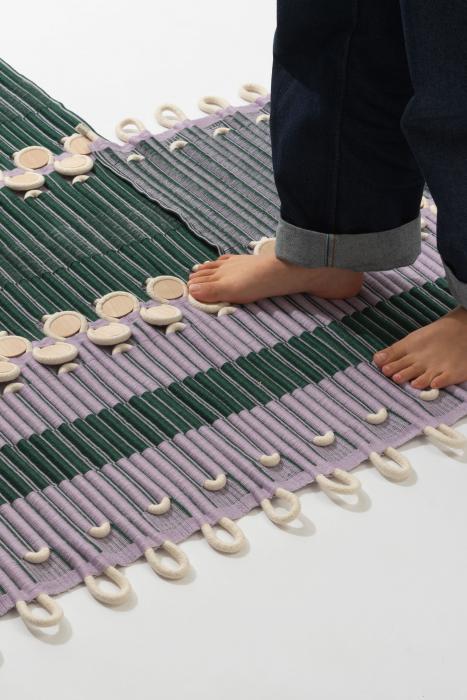I. SUMMARY INFORMATION
Project
269700
Status
Submitted
Award category
Products and life style
You want to submit
NEW EUROPEAN BAUHAUS RISING STARS : concepts or ideas submitted by young talents (aged 30 or less)
Project title
Lisières, moving contours
Full concept/idea title
New uses for textile borders
Description
Textile borders are often concealed in areas of junction, overlaps and finishies. The project seeks to raise the status of these clandestine selvedges, so that they are meaningful from the moment the textile is made, until it is used.
Through several typologies of borders applied to objects from the domestic universe, the systems developed are no longer just ways of finishing objects, but also possibilities for extending them.
Where is your concept/idea being developed or intended to be implemented in the EU?
France
Ile-de-France
5, rue Étienne Dolet
Paris
75020
II. DESCRIPTION OF THE PROJECT
Please provide a summary of your concept/ idea
This project is an exploration of the selvedge, and more broadly of the textile border. Areas of junction, overlap, finishing steps, it is a question of directing the gaze to discreet or deliberately hidden details in the usual textile design.
How can selvedges be valued and considered as significant elements from the very beginning of textile production to its use ?
Through the research of several typologies of borders, the systems developed are no longer just ways of finishing objects, but also possibilities for extending them.
Three types of borders are developed, materialising through three objects from the domestic universe. It is through their borders that these objects come to life :
A blind whose tubular selvedges enable the integration of a ribbon, giving the textile the possibility to move up or down. This object combines an alternation of flexible and rigid strips and is weighted down by clay weights.
A system of boxes to be built, whose borders form a structure. These are panels of the same size, to be superimposed perpendicularly. By inserting wooden trunnions in the loops at the edges, a volume can be created, the box is built.
A carpet made up of portions to be combined, whose edges interlock. The loops on the edges of the woven portions fit together and thus provide support. To create the desired surface, it is therefore possible to combine the panels in twos, threes or more.
Between large-scale trimmings and traditional weaving, the question of the tool and the process is at the heart of this research. Questioning this technique by intervening in the very structure of the weave, it is a matter of playing between what is woven, what is not woven, what exceeds. Thinking about textiles and their companions, made of wood or clay, is also a way of interrogating this practice. The weaving stage then combines the fabrication of the raw material and finishing operations.
Please give information about the key objectives of your concept/idea in terms of sustainability and how these would be met
The project seeks to enhance the value of the selvedge, so that it becomes an asset and not a defect. Whether in clothing or furniture, in assembly or finishing, the edges are often concealed. We try to hide them : we cut, we glue, we hide behind a hem or an invisible seam, and extra thicknesses are created. With all these steps, the manufacturing phase of a textile product often generates a lot of waste.
By anticipating the finishing and assembly stages, waste is limited and the construction stages optimised. It is a question of thinking about fastening systems, cuts and folds directly in the production phase of the textile. Moreover, the assembly processes used in this project are solely mechanical and do not use glue or toxic chemical substitutes.
Halfway between craft and industry, grouping together the fabrication of the raw material and finishing operations makes it possible to centralise production and avoid the need for the pieces to travel, at a time when each stage is dispersed to different places in the world.
Moreover, these objects are intended to be durable over time. These new types of selvedges are ways of finishing, but also possibilities of connections allowing an extension of the objects, an enlargement. In each case, over time, the objects can be adjusted to different parameters of the environment, spatial or temporal, depending on the degree of encumbrance or intimacy desired.
The border as envisaged here is not just a finishing point but rather a starting point, initiating the rest of the object.
Please give information about the key objectives of your concept/idea in terms of aesthetics and quality of experience beyond functionality and how these would be met
In many cultures, selvedges carry particular symbolic meanings (Kashmir pashmina shawl, Persian carpet...). Inspired by this richness, in the manner of a zoom lens, the project highlights the selvedge by various means : by giving it a use, but also by enhancing it through the play of materials, colours, rhythms and motifs. Through a continuous or dotted frame, intense colours define the main lines of the objects. It is a question of finding a new dialogue between what forms the border and what forms the body, by creating a strong contrast or sometimes a more delicate shift. Indispensable to each other, the main body and its border are dependent.
This aesthetic research into borders also aims to facilitate the handling of objects. Almost like a signage work, these borders act as signs guiding the user, first in the construction of the objects, then in their uses, and even in their adaptations to various scales and environments.
For example, in the case of the boxes, the presence of coloured loops on the borders indicates where to place the wooden trunnions during construction. The loops join together, emphasising the edges. In the case of the blind, the tubular selvedges that hold a ribbon are like dotted lines that move towards and away from each other as the blind is raised or lowered. In the case of the carpet, the loops of each section complete each other when placed in a staggered pattern, like a puzzle. A path of waves is formed.
Finally, in space, the objects highlight a zone on the floor (carpet), a zone in front of a window (blind), and finally a volume (boxes). They adapt to the space but also mark and redefine it.
Please give information about the key objectives of your concept/idea in terms of inclusion and how these would be been met
It is a project where the weaver takes on a value. The weaving phase is not just about producing a large yard of fabric, but about designing an object. It is a question of revaluing the production phase, of putting forward the process so that it is not hidden.
It is also a project where the user can appropriate the objects. For the box, the user chooses the size and number of panels to be combined and then builds it. For the blind, the length can be chosen by the user by cutting into the float section. Finally for the carpet, the user chooses the number of woven portions to be combined. From a rectangle to a more complex shape, the user chooses the shape and size of the rug to fit his space.
Furthermore, the systems of construction and use make the project accessible to everyone, from children to the elderly. These objects have potentially several states, to be developed over time.
By being guided by the textile, almost like a game, the user forms the object, he is included in the process. As a way of emphasising use, this project aims to make the systems as intuitive as possible.
Please explain the innovative character of your concept/ idea
This project questions the industrial process, which is focused on speed and productivity. It proposes a more reasoned mode of production by rethinking manufacturing from the beginning of the chain, with less quantity, but also less waste, and finally an optimised production.
Weaving is a multi-faceted technique. The project proposes to take advantage of this weaving stage, which avoids numerous concealing stages (sewing, gluing, etc.). The assemblies without glue or chemicals also contribute to its innovative side. It is more a question of thinking about textiles with other materials (wood, clay, metal) to see how they interact and complement each other.
The project aims to reintegrate artisanal know-how, sometimes forgotten, into industrial production. Tubular selvedges, hollow selvedges, fringes, how to reintegrate ancestral techniques (especially trimmings) into everyday objects? And how can they be made to evolve towards a more contemporary image?
The project is also innovative in the relationship it proposes between the user and the objects. Designed to be solid and durable, these objects can be adapted to different moments in life (growing, shrinking...).
Moreover, these systems could be applied to other types of objects, such as a light, a cover or a seating system. Many other types of borders could be created.
Please detail the plans you have for the further development, promotion and/or implementation of your concept/idea, with a particular attention to the initiatives to be taken before May 2022
For the development of the project, going to factories and manufactures, to develop the process with an engineer in a viable way, is a first step.
I would also like to pursue my project by working with a Jacquard loom, opening up other possibilities.
A large part of this next step is research : sourcing materials and yarns, studying an economic model, studying the market, the competition, looking for funding.
I would like to put forward bio-sourced or even upcycled materials. I also plan to be able to operate by pre-order, in order to avoid any losses.
One of the aim of this project is to promote transparency in manufacturing, and I would like to reach a target group that is sensitive to ethical consumerism.
Communicating through exhibitions, articles and social networks is also part of the project's development plan.
III. UPLOAD PICTURES
IV. VALIDATION
By ticking this box, you declare that all the information provided in this form is factually correct, that the proposed concept/idea has not been proposed for the New European Bauhaus Rising Stars Awards more than once in the same category.
Yes
